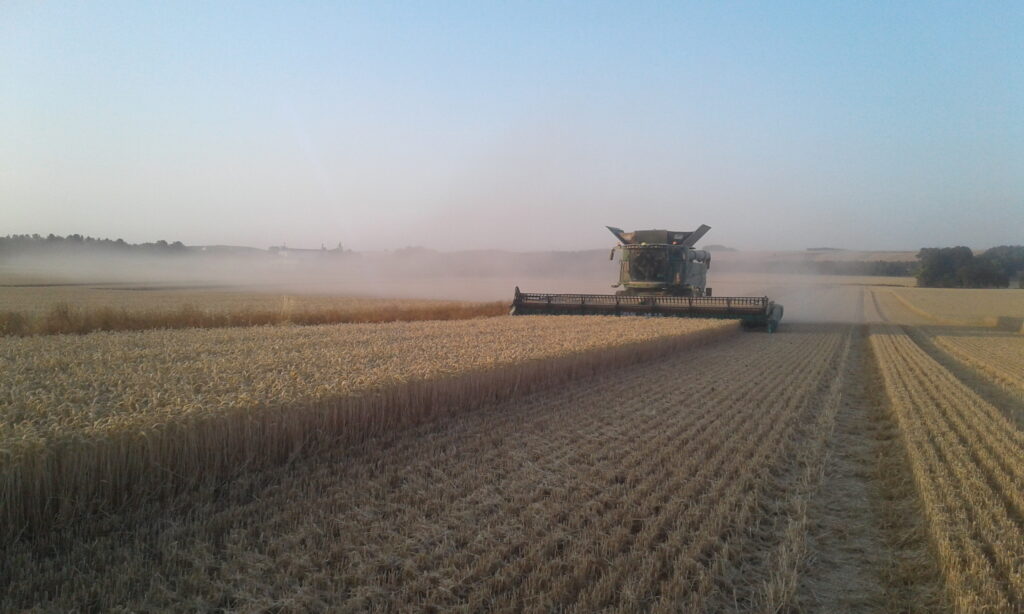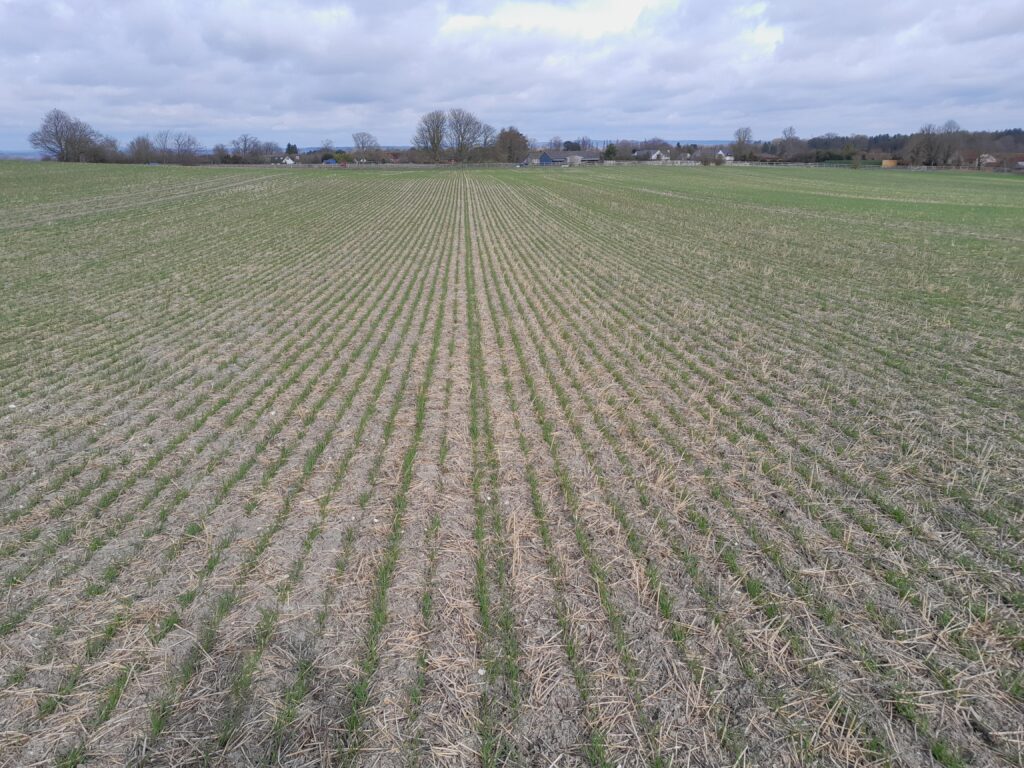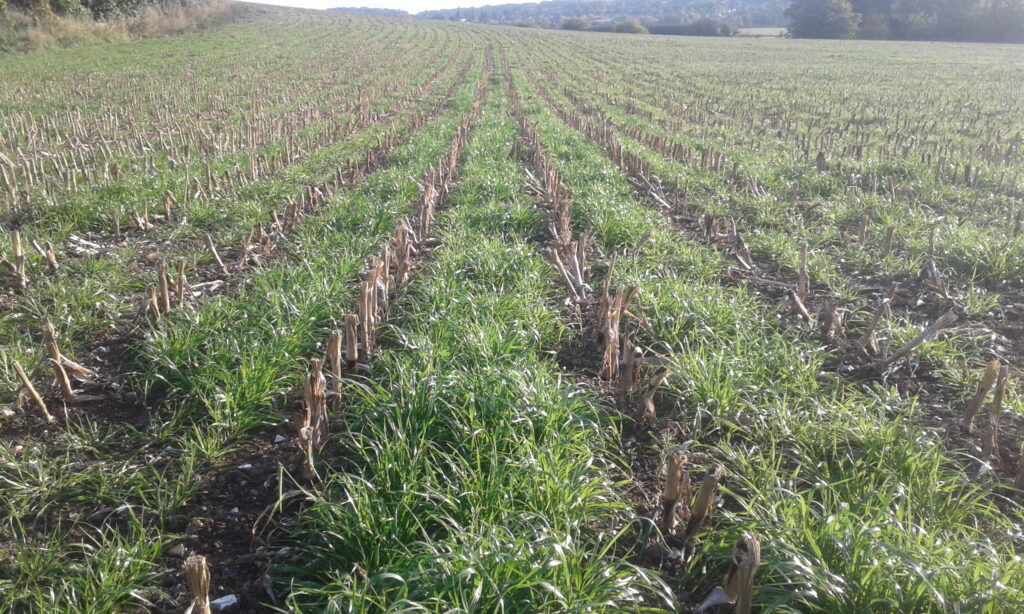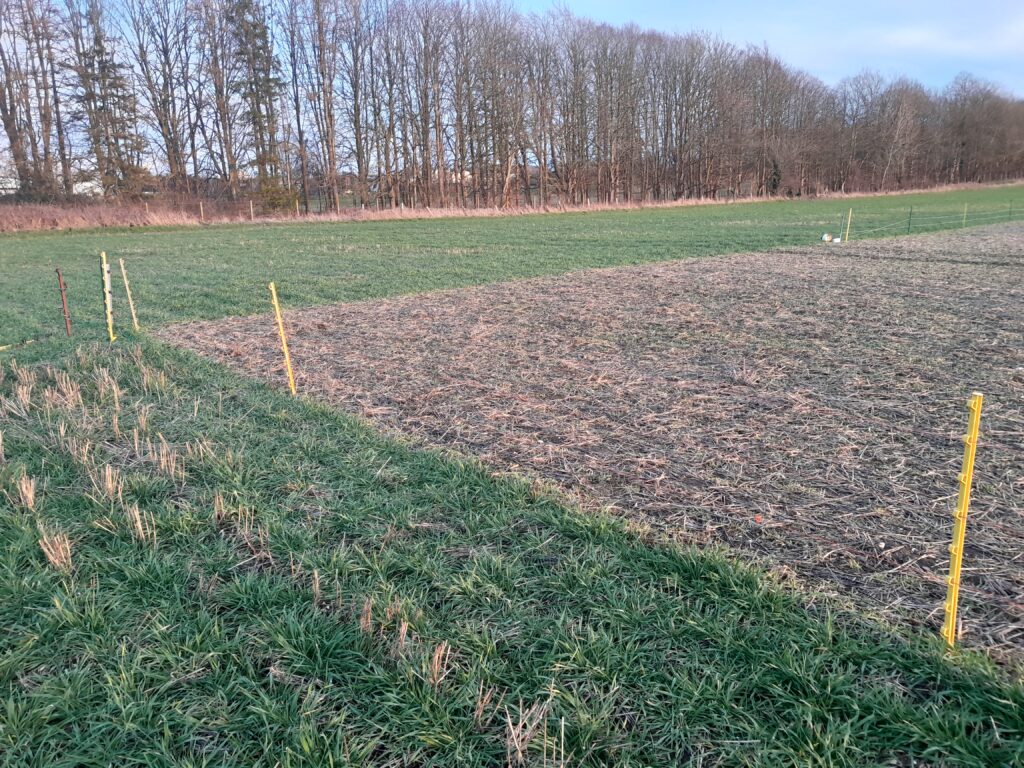April 2023
Since my last article we have taken delivery of the new Horizon disc drill and used it for Autumn and Spring drilling of cereals and Beans.
Initial results have been good and I have been pleased at the lack of blackgrass germination behind the drill ( One of the main reasons for the purchase) Patches in fields which normally have high populations are much cleaner than they are usually after drilling with the tined Kockerling drill.
Trying to be clever however by attempting to “stack” the blackgrass control benefits of disc drilling and late drilling caused us to get a bit caught out last Autumn after the weather broke and we were reminded that disc drills work better when the dust is flying…………..
Luckily the December frosts came along to save us and the Horizon worked beautifully direct drilling in to frosted ground with no soil damage ( we were even able to roll afterwards on gentle frosts )

The other Drilling success story last year was our first foray in to sowing grass between maize rows with our Weaving IR drill. The weather after sowing was dry for months but after the maize harvest the tiny seedlings that had established romped away giving useful soil cover for slurry and digestate spreading and also an income stream later in the winter from tack sheep grazing.
In my last article I promised I would report back on last years trial of grazed cover crops vs. ungrazed cover crops pre spring barley planting ( Remember I reported we had much better establishment and early growth on ungrazed fields )
Results were as follows ( Combine yield meter results, so not actual yields but relative yield performance is valid as used same combine on CTF lanes and with same yield meter settings combined at similar moistures within a few days of each other. )
Ambling Way : ( Grazed cover crop ) 4.56 T/Ha
Gravel Hill : ( Grazed cover crop ) 5.13 T/Ha
Stoney Hedge : ( No cover crop ) 6.5 T/Ha
70 Acre : ( Ungrazed cover crop ) 6.03 T/Ha
Churchmere N. : ( Ungrazed cover crop ) 6.26 T/Ha
Interesting results ( especially the field with no cover crop! ) that back up the results that Tim Parton reported for his Spring Beans after either grazed or ungrazed cover crops.
Leaving cover crops ungrazed and taking the Countryside stewardship payment of £124/Ha is a tempting carrot compared with an income of around £30-£40 /Ha from grazing sheep on cover crops ( based on average cover crop giving approx. 75 sheep grazing weeks/Ha over winter period @ 45p/hd/week ) and potentially ending up with a yield hit in the following crop.
Our trial grazing Winter barley last year seemed to give a small yield hit with the ungrazed crop showing 10.13 T/Ha on the yield monitor and the grazed strip showing 10.1 T/Ha. The grazed crop was shorter and carried less disease but we did not reduce any inputs on this strip.

The trial continues this year with a bigger 2 Ha block grazed out in the middle of a 40 Ha field of Hybrid winter barley. Looks quite scary at present but will report back after harvest.
I am very conscious of the fact that there are a lot of anecdotal results flying around in the Regen. Ag. space and think that it is very important that proper trials and comparisons of systems and products are carried out by farmers. This can be difficult when farmers embrace wholeheartedly a new regen. Ag. system and ditch completely a previous ‘industrial’ ag system making it hard to analyse farm results without comparisons.
We carry out regular tramline type trials which can be time consuming and disappointing as they often show so little variation it is not easy to pick up differences on the combine yield meter , maybe it is time to add a weighbridge to my ever increasing shopping list?
This year we are looking hard at N use Efficiency improvements and are trialling plantworks SR3 bacterial product , QLF boost and high efficiency amide nitrogen as methods for increasing NUE and reducing total N applications in future.
On a more general note I am very excited that DEFRA environmental schemes are moving in the right direction and the new SFI options are very attractive, particularly the £45/Ha no insecticide use option.


The companion cropping option also looks appealing and it has encouraged me to re-start our clover understorey and spring bean/cereal companion cropping trials which have languished for the past couple of seasons.
My final comment is on BNG which seems to be the most popular topic of conversation in the media at present with land agents talking of tantalisingly high ”retire to the Caribbean” type returns. We have one of the first BNG schemes which has been up and running since last summer and we have received our first stage payment. Whilst the payment seems high it is important to realise that it is for a long time period ( ours is 25 years as it pre dates the mandatory schemes which start this autumn and will be 30 years duration ) It is also important to realise that the habitat uplift needs to be delivered ( unlike countryside stewardship which just requires rules to be followed ) We lost 50% of our tree planting to hares in the first few weeks and had to replant . We also had poor establishment of eye wateringly expensive chalk grassland seed last autumn and are having to re sow the entire area this spring to ensure a viable area establishes.
Overall the scheme will only deliver a return comparable with cropping over the 25 year period but I am happy we have done it as it is a bit more “ Factory maintenance “ which helps us build our sustainable farming system.
London Marathon Challenge

After recovering from prostate cancer last year ( including briefly dying on the operating table! ) I decided to give myself a 60th Birthday present and prove I am still alive by running the London marathon .
I am raising money for the microloan Foundation which is a small charity supporting women in sub Saharan Africa with small business loans to help them work their way out of poverty.
Nicely fits with my farming passion as 90% of the loan recipients are female smallholder farmers like Chawezi ( pictured ) who is a Bean , Potato and Tomato farmer who struggled to buy seeds and fertilizer without the help of Microloan Foundation.
https://2023tcslondonmarathon.enthuse.com/pf/julian-gold



